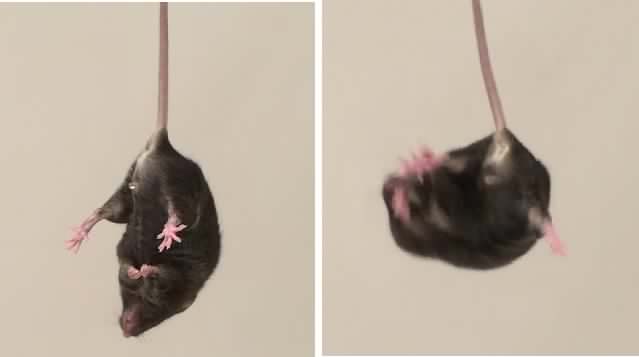|
Home >Recent Advances
Understanding the role of a Tourette syndrome-associated gene (Katayama et al., 2009) Tourette syndrome is a neurodevelopmental disorder characterized by multiple motor tics and at least one vocal tic with onset in childhood. The disease is often concomitant with obsession compulsive disorders, attention-deficit hyperactivity disorders (ADHD). The cause of this disease has not been fully elucidated. However, the involvement of genetic factors has been proposed, and many researchers are working to understand the responsible genes. In this study, we clarified the role of SLITRK1, a gene that is proposed to be associated with Tourette syndrome. We found a gene family encoding two Leucine-rich-repeat-domains and a transmembrane domain, and reported them as Slitrk family genes in 2003 (Slitrk is an abbreviation and Slit-and-Ntrk-like). Slitrk family consists of six structurally related genes (Slitrk1-6). The reason why we focused this gene family is that they possessed very interesting structural and expression features. In particular, the expression pattern suggested that they are generally involved in the development and maturation of neurons. Since 2004 when our laboratory started, we have been trying to clarify their roles in vivo. In 2005, Abelson and colleagues reported that human SLITRK1 (we generally spell it in capital letters for human gene) is mutated in some Tourette syndrome patients and their family members. Their report attracted attentions of many researchers working on neurodevelopmental disorders. They extensively investigated the mutations of SLITRK1 gene in many Tourette syndrome patients in different ethnic groups. As a consequence of such efforts, the frequency and the type of the mutations are being accumulated. However, how frequently SLITRK1 mutations are associated with the Tourette syndrome is still controversial among the researchers. To clarify the physiological role of Slitrk1, we generated a knockout mice strain in which mouse Slitrk1 genes has been removed with a minimal change on the chromosome. Subsequently, behavioral abnormalities of the Slitrk1-deficient mice were screened. A systematic behavioral abnormality assessment is a very efficient way of research to clarify the role of candidate genes for the neuropsychiatric disorders. As a result, we revealed that the Slitrk1-deficient mice exhibit anxiety-like and depression-like behavioral abnormalities. Below is an example of the behavioral test we conducted on the Slitrk1-deficient mice. The apparatus consist of a “plus” shaped maze (arms) positioned around 60 cm above the floor. At this height, the laboratory mice generally hesitate to jump off. One pair of the arms is shielded by plastic wall whereas the opposite pairs of arm lack the shields (open arms). If we put the mice in the center of this plus-shaped maze, mice tend to investigate their environment by walking around. We can record their behavior by a motion tracking system and can calculate the ratio of times to be in shielded arms/ open arms. It has been demonstrated that the mice with anxiety-like abnormality stay longer time in the shielded arms than the normal mice. As well, Slitrk1-deficitent mice stayed longer time in the shielded arm in comparison to the normal littermates with intact Slitrk1 gene.
Plus Maze apparatus Another behavioral test for the depression-like behavioral tendency is shown in below pictures. This test is called as “Tail-suspension-test”. Experimenters fix the tip of mice tails by scotch tape, and suspend the mice in an inverted position. The behavior of the mice were recorded for 5-10 min. Generally, the mice wriggle strongly and wobble their bodies for a while. However, motionless period appears later. The motionless period generally increased in the later tested periods, and is considered to represent an experimental condition mimicking despair. In the Slitrk1 deficient mice this motionless period was increased in comparison to the normal mice.
Tail suspension test (left, motionless state; right, wriggling state) The behavioral tests like above are influenced by many factors. Therefore, we have to be very careful to consider whether the results actually reflect the subjects to be assessed (in our case, we assessed the effect of a gene loss on the behaviors). However, if we conduct behavioral experiments in carefully arranged tests as well as valid statistical analysis, we can figure out something like “personality of the mice”. Observing the behavioral abnormalities, we analyzed the neurotransmitters of the Slitrk1-deficient mouse brain. Interestingly, the content of noradrenaline and its metabolite was increased in the brain. When we administered a drug (clonidine) that modulates the noradrenergic neurotransmission, the anxiety-like behavioral abnormalities were suppressed. The drug is in fact also used for the medication of Tourette syndrome patients. The behavioral abnormalities in the Slitrk1-deficient mice are partly similar to those appeared in the Tourette syndrome patients. Together with the effects of clonidine on the abnormalities, our results support the idea that SLITRK1 is a causal gene for the Tourette syndrome. We are expecting that our study is beneficial for better understanding of the neurodevelopmental disorder. |

